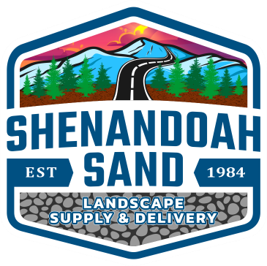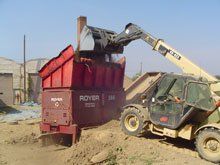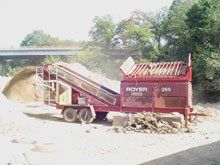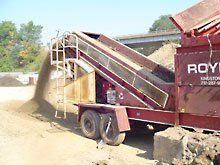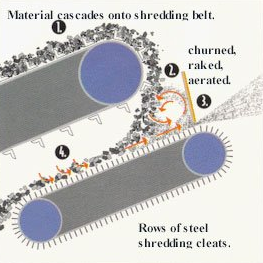After material is loaded into the hopper of the Royer, a feed conveyor carries it up to the shredding chamber [1] where it cascades onto the shredding belt [2].
There, the material is thoroughly churned while rows of steel shredding cleats rake and aerate the load. Fully processed material discharges under an adjustable sweep [3].
Oversize lumps fall back for further processing. Non-shreddable materials and debris are separated automatically and discharged through a trash chute [4].
The result is a light, fully aerated product that’s clean, uniform in particle size, and free of unwanted materials.
This process provides a perfect hassle-free dirt, that is great for top coating your lawn, as well as your flower beds and gardens. Simply spread and plant!
